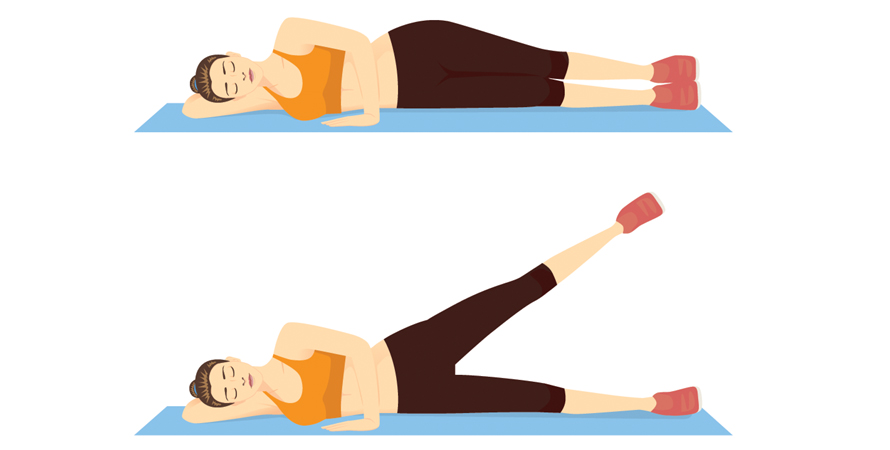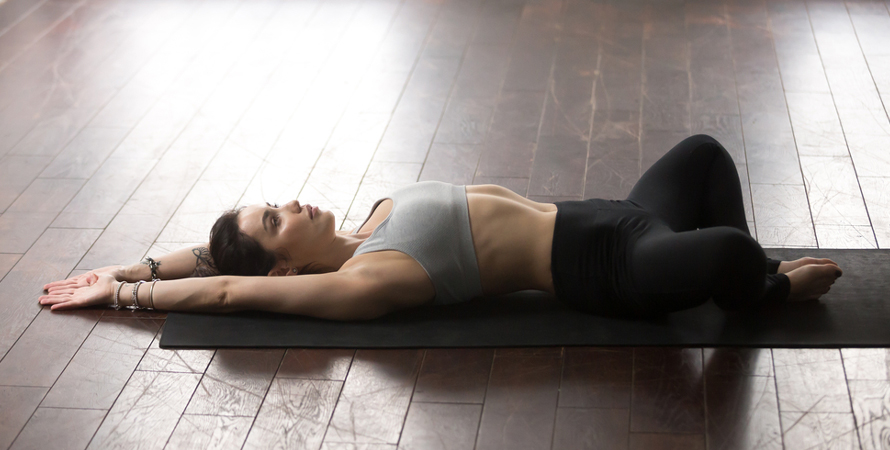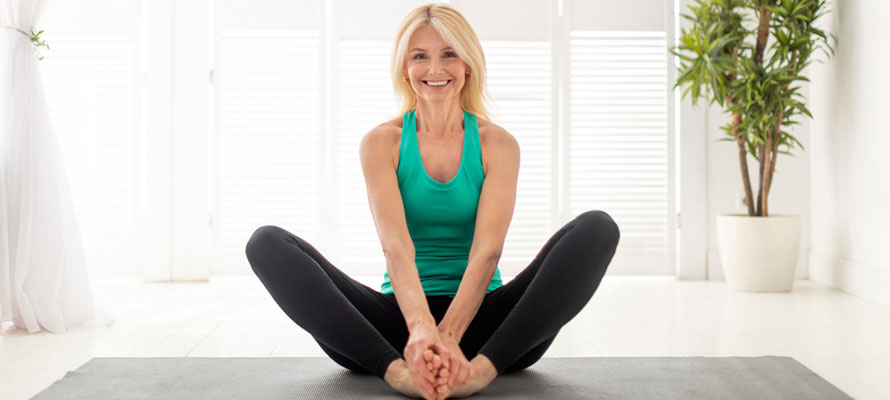Overview Of Hip Muscles And Joints
For the stability of your legs and body and to be able to move from one place to another, you require flexible hip muscles and joints. Weak, inactive, injured, and aging hip muscles and hip joints will cause you pain as you move.
Remember, it’s the hip joint, ligaments, tendons, and muscles that allow you to move forward, backward, sideways, and in circles. The joints help you carry your body in a balanced way as you stand or walk.
Therefore, you should do hip strengthening exercises for strong hips, thighs, knees, and legs. This will help lessen pain, weakness, and injuries, even if you are a senior.
What Are Hip Strengthening Exercises?
Hip strengthening exercises build the tendons, ligaments, and hip muscles to maintain flexible and firm hip muscles and joints. The hip joint has a round head of the bone fitting into the curved face (cup) of the pelvis bone, like a ball and socket. These hip exercises are those that work on the hip muscles and joints to make your hip stronger, stable, firm, and more flexible for easier, injury-free movement.
Hip exercises help in knee alignment while working on the leg muscles. In short, most hip strengthening exercises not only stabilize the hips and make them move and flexible, but they also work on the legs and the knees. This enables the hips, legs, and knees to carry body weight without falls and injuries.

Specifically, hip exercises work on the main muscle on the side of the hip, gluteus medius[1], and the main extensor hip muscle, gluteus maximus[2].
Some hip strengthening exercises include:
- Straight leg raises
- Seated hip marching
- Clamshell exercises
- Single leg deadlifts
- Hip flexors
- Butterfly poses
- Hip marching
- Isometric gluteus medius exercises
- Knee chest poses
- Wall slides
7 Best Exercises You May Do At Home To Strengthen Your Hips
If you want to do hip exercises at home, you have many to choose from. All the workout routines will not require any special equipment or supervision.
Here are our best seven hip strengthening exercises you can do at home.
1. Seated hip marches
Do you want to build more strength in thigh and hip muscles? Try the seated hip march hip exercises at home. Seated hip march exercises help increase strength in the hip and thigh muscles.
How to do them:
- Sitting at the edge of a chair with bent knees, raise your leg as high as you can go. Pose a moment, and lower it slowly.
- Change to the other leg to complete one repetition.
- You can do 3-5 sets of 5-10 repetitions. But you can do as many as you can manage as you gain endurance for more strength and flexibility of your hips[3].
2. Knee lifts or knee-chest poses

Knee lifts are very beneficial hip exercises at home. Knee to chest poses will work your thigh muscles, the front hip muscles or flexors, and the glutes. Also, knee lifts will make your pelvic hip joint strong and more flexible since the hip joint is the one that allows your knee to move up and down.
To do the knee to chest lifts[4] workout:
- Lie on your back, and stretch your legs.
- Slowly, move one leg to your chest. Let your other leg remain flat on the ground as you lift the other leg, and pose for 30 to 60 seconds.
- Then, lower your leg and alternate it.
- Do 2 to 3 sets for each side or your comfort level.
3. Hip rotations or circles
If you want to boost stability and flexibility for your hips, then these hip exercises at home will do the trick.
In the beginning, you may use any stable object to support yourself as you rotate your raised leg from your hip joint to avoid a fall if you aren’t stable enough.
Follow the steps to do these hip strengthing exercises for seniors or any age:
- Stand on one leg, lift it slightly from the ground, and extend it forward.
- Then, rotate it round in small circles slowly at first. You can do 20 to 30 rotations. You can move it clockwise and anti-clockwise.
- Next, use the other leg for the rotations.
- When you get more used, don’t support yourself since you will engage more muscles in the process. Increase the circle sizes as you progress and the number of circles too.
4. Side leg raises

One of the best hip strengthening exercises for runners is the side leg raises. The raises will give you hip muscle strength.
How to do them:
- Lie on your right side while bending your right leg with your foot resting firmly on the floor. Support yourself with the elbow.
- Raise your left leg slowly, and don’t bend your waist. Keep your raised leg in line with your torso without moving it to your front and back.
- Pose for 5 to 10 seconds with your leg raised and repeat about 5 times.
- Next, change sides and repeat.
5. The donkey kicks
An exciting pose of hip strengthening exercises for runners, the donkey kick exercises[5] will help you greatly for stability and strength.
How to do donkey kicks:
- Place your palms on the ground and get on all fours. Keep your arms, shoulders, and knees supporting you shoulder-width apart.
- Then, lift one knee and kick back and upwards such that your stretched or kicking leg thigh aligns with your back.
- Your foot bottom should face towards the sky as you kick.
- Ensure to engage your core and glutes during the movement.
- Bring your knee back and repeat the kick with the other leg.
6. Hip flexors
Try the hip flexors hip strengthening exercises to stretch and strengthen your front hip muscles, glutes, and thighs. The hip flexor exercises have many variations, but here is one of them.
How to perform hip flexors:
- When lying on your back, lift your leg to stop at 90 degrees at your hip.
- Let your other leg remain firmly on the ground, and squeeze the back of the knee on the floor until you feel a stretch on your hip.
- Hold it for about 30 seconds. Repeat, with the other leg.
- Some experts recommend doing the hip flexor with the knee-chest pose for a better effect.
- You can do the hip flexor while standing straight and lifting one leg at 90 degrees at the hip, then posing for 30 seconds as you get more stable.
7. Clamshell exercises

These are among the best hip strengthening exercises for runners to help develop strong hips, thighs, and glutes. With time, your pelvic muscles become stable, loosening your back and helping to prevent injuries.
How to do the clamshell:
- While lying on your side with a resistance band tied to your lower thighs, bend your knees.
- Swing your free leg up as high as you can, then hold for a few seconds.
- Bring the raised leg back to the starting position.
- Alternate the sides after each set.
- You may repeat 3 sets of about 10 repetitions, or as per your comfort.
Special Instructions To Hip Exercises For Seniors
The hip muscles may become weak with advancing age. As a result, seniors may be unable to exercise while standing, walking, bending, squatting, stretching, or climbing the stairs. The hips may become inflexible and unstable.
As such, one should approach hip exercises for seniors with a lot of care. For instance, seniors can do hip exercises while seated either on a chair, bench, or the floor.
Healthier individuals may do hip exercises for seniors while lying down to improve the hips and the gluteus muscles. They can stand and do the other hip strengthening exercises. To maintain more balance as they exercise, seniors can exercise next to a wall, bench, chair, or rail to avoid falls.
Seniors must warm-up, start slowly, perform easier poses, do fewer repetitions, and rest a bit before doing the next round or workout. All seniors must consult their doctor[6] if they get pains, aches, strains, or injuries during hip exercises to avoid making any injury worse.
Precautionary Measures To Take When Doing Hip Exercises

Sometimes, you may experience pain, stiffness, or injuries in the hips as you work out. If you have any injury, are pregnant, or are a senior, take precautions before or during exercise to avoid serious injuries.
But regardless of your situation, ensure you warm up before exercising. Always start any hip exercise slowly with simple or easy poses. Then, go for the more complex or those that require heavyweights.
Do a few repetitions and up the count as you get more experience and endurance. Take breaks between different repetitions and exercise variations. Eat at least something light when hungry.
If you experience any pain, are aging, or pregnant, you may consult your doctor or fitness expert before engaging in any hip exercise. In such cases, never try to crack your hip. Even under normal situations, look out for any hip pain combined with a pop sound when you crack your
hip. If it pops as you do it slowly, consult your physician.
Frequently Asked Questions
Perfectly. You can strengthen your hips through stretching and exercising the hip muscles. This will make your hips firm, stable, and flexible for you to move easily, confidently, and without injuries.
You can combine exercises such as leg raises, knee lifts, hip circles or hip flexions, the wall slide, planks, seated march, and the butterfly pose to make your weak hip strong. Start slowly and progress as you get used to each workout.
A mobile hip keeps you stable, strong, and flexible. Try workouts like hip rotations, butterfly stretches, and frog stretches to enhance hip mobility. Also, squats, knee lunges, the fire hydrant, and piriformis stretches.
You can strengthen your front hip muscles or hip flexors through various exercises[7]. The hip exercises include supine hip flexor activation, the psoas march, and straight leg raises while seated.
Conclusion
Hip strengthening exercises lead to strong, stable, and more flexible muscles and hip joints. The hip exercises work the glutes, thighs, and legs. Plus, some routines benefit the core and overall fitness.
The aged must approach hip exercises for seniors with care, starting with warm-ups, doing the easier workouts, and doing the hip exercises while seated or lying down. Also, seniors can hold onto stable objects for support.
Listen to your body as you exercise for any pain, discomfort, or injury to avoid serious injuries. If in doubt, consult your doctor to maintain your hip health.






